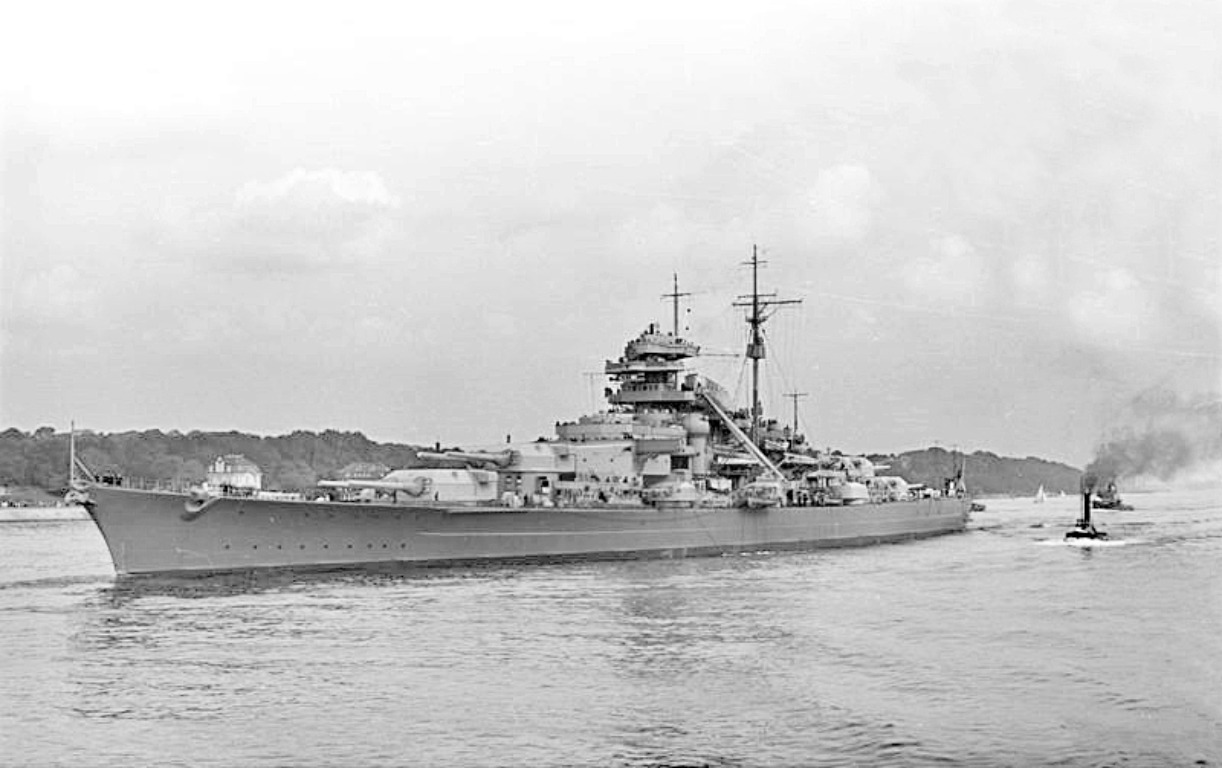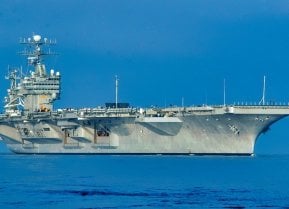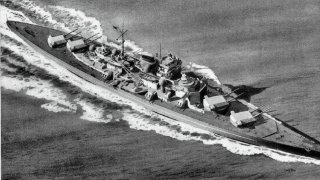Bismarck: Why Hitler's Super Battleship Terrified the Allies During WWII
The Bismarck class, which included the Bismarck and the Tirpitz, was designed in the mid-1930s as the German answer to French naval expansion (especially France’s two Richelieu-class battleships).
The name Bismarck is synonymous with battleships. It is also synonymous with disappointment.
Named for Chancellor Otto von Bismarck, the Bismarck battleship was launched in February 1939, just months before the Nazis commenced their blitzkrieg on Europe. At the time, the Bismarck and her sister ship, the Tirpitz, were the largest battleships ever built in Europe.
The Bismarck was commissioned in August of 1940 to much fanfare. But the vaunted ship’s service career would only last eight months.
The Bismarck’s Specifications
The Bismarck class, which included the Bismarck and the Tirpitz, was designed in the mid-1930s as the German answer to French naval expansion (especially France’s two Richelieu-class battleships). The Bismarck ships were laid down after the signing of the Anglo-German Naval Agreement, and they appeared to fall within the 36,000-ton limit of the Washington Naval Treaty that regulated battleship design in the 1930s.
But secretly, the Bismarck ships exceeded the weight limit, and significantly. The Bismarck displaced 50,300 tons when fully loaded. Granted, by the time the Bismarck was completed, the international treaty system had fallen apart, as Japan had withdrawn in 1937 and signatories had implemented an escalator clause that permitted displacements up to 45,000 tons. Still, the German designers worked in secret to desecrate international regulations on battleship size.
The finished product was 792 feet long on the waterline, with a 118 foot beam and a 30 foot draft. One dozen Wagner boilers were used to propel three geared turbines and three screw propellers, which allowed the Bismarck to reach speeds of 30 knots. The Bismarck had a range of 8,870 nautical miles.
The Bismarck sailed with a crew of 1,962 enlisted men, with 103 officers. The crew was divided into twelve divisions, each with between 180 and 220 men. Four divisions were assigned to the ship’s main and secondary batteries.
Two divisions were assigned to the ship’s anti-aircraft guns. One division consisted of miscellaneous specialists like cooks and carpenters. Another featured ammunition handlers. One was for radio operators, signalmen. One division was for quartermasters, and the final three divisions were for engine room workers.
For armament, the Bismarck relied on eight 38 cm SK C/34 guns arranged in four twin gun turrets. The secondary armament featured twelve 15 cm L/55 guns, sixteen 10.5 cm L/65 guns, sixteen 3.7 cm L/83 guns, and twelve 2 cm anti-aircraft guns.

Additionally, the Bismarck carried four Arado Ar 196 reconnaissance floatplanes.
Bismarck Battleship Service History
The Bismarck was launched with elaborate ceremonies. Dorothee von Lowenfeld, the granddaughter of Chancellor Otto von Bismarck, christened the ship. Adolf Hitler himself made the christening speech. After commissioning, the Bismarck left Hamburg to begin sea trials, during which an imperfection was discovered. When using altering propeller revolutions, the Bismarck became uncommonly difficult to steer. However, live fire tests proved that the Bismarck was a stable gun platform.
The Bismarck finally deployed as part of Operation Rheinubung, an effort to block Allied shipping to the United Kingdom. It would not last long in service. The ship was sunk approximately 300 nautical miles off Brest, France, in May 1941, after torpedo bombers from the British aircraft carrier Ark Royal were able to disable the Bismarck’s steering gear, jam her rudders, and prevent her escape from the battle. British battleships further damaged the battleship, forcing the Kriegsmarine crew to scuttle their own ship — an ignominious end to one of the most touted warships ever built.
About the Author
Harrison Kass is a prolific defense writer with over 1,000 published articles. An attorney, pilot, guitarist, and minor pro hockey player, Harrison joined the US Air Force as a Pilot Trainee but was medically discharged. Harrison holds a BA from Lake Forest College, a JD from the University of Oregon, and an MA from New York University. Harrison listens to Dokken.
All images are Creative Commons.


